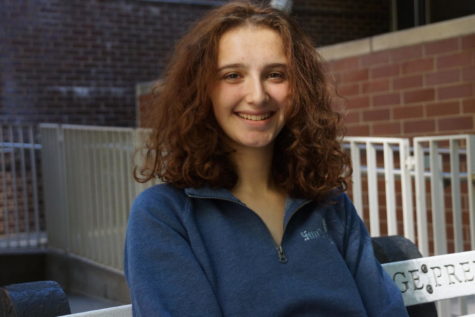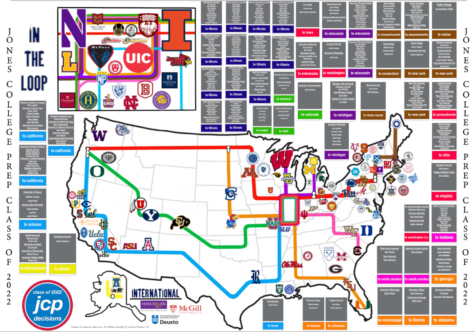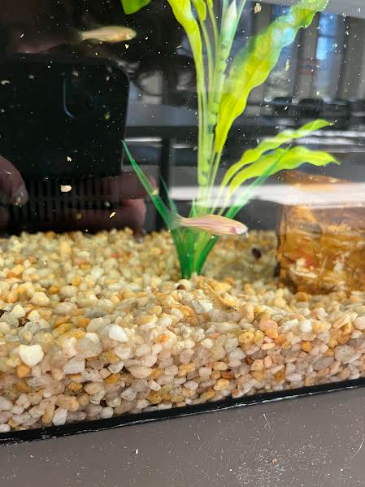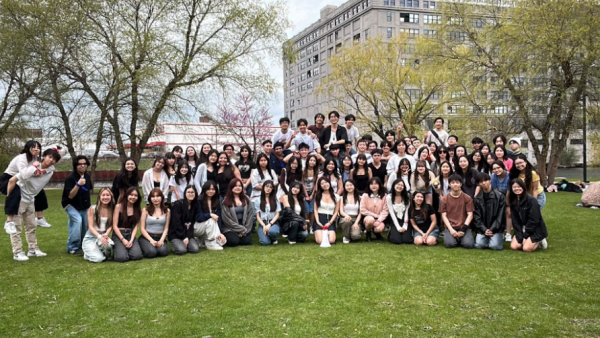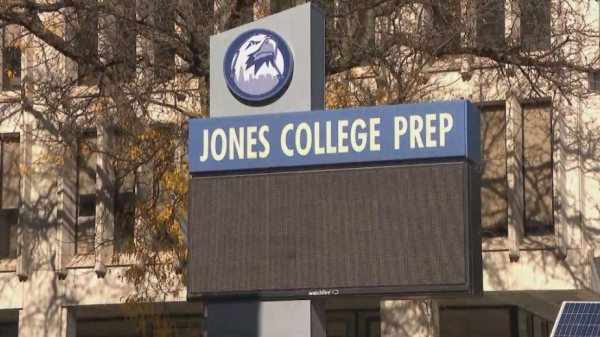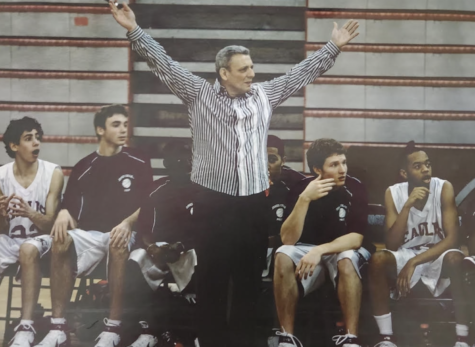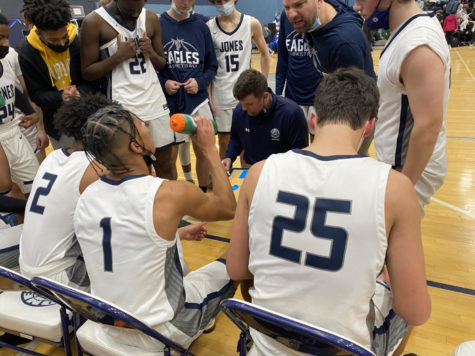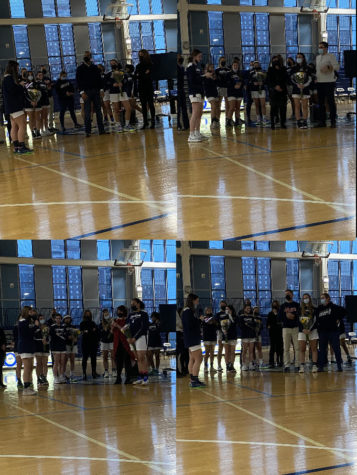Building on up
Students participate in annual bridge building competition at Illinois Tech

Jones’s grad at grad values encourage teamwork, inter-grade discussion, and a sense of community – three values fostered by participants of the Illinois Tech bridge building competition. As students plowed through final exams, these participants engaged in a day-long event commemorating careers in civil and structural engineering.
“In [engineering] class, students get experience with bridge building and can participate in the competition,” said Frank Hashimoto, engineering teacher and sponsor of the Architecture and Engineering club. “I give tips throughout the building process about bracing, connections, and . The students that win are able to make sure that their bridges can’t fail and are sufficiently braced.”
Ethan Tam ‘22, a Science Olympiad member, competed at his utmost in the 2019 competition, where he placed first in the city division. Although he garnered the second place title in the most recent competition, Tam still considers bridge building to be a rewarding experience.
“[Bridge building] is really calming – I have a lot of alone time,” said Tam. “My brother competed eight years ago, so I’m proud to follow in his footsteps. I [rarely] get stressed.”
While not a teacher of Tam, Hashimoto facilitates close mentor-mentee relationships and encouraged many of his students to participate in the 2020 competition. He found many recruits within his own classes, pushing them to compete based on in-class skill and participation.
“In engineering, [students] build a similar bridge and are taught to use similar techniques,” said Hashimoto. “They get experience working with a team and learn more about engineering and architecture.”
The specifications of bridge structures, most notably dimension and density restrictions, vary from year to year so as to provide participants with new, innovative challenges that can be applied to the engineering field.
“[Bridges] have to support a load at three different locations and adhere to a height restriction of no more than 25 yards,” said Hashimoto. “The ratio between the energy needed to power the process and the energy created is called efficiency. The bridge with the highest efficiency wins. One could [either] have a very heavy bridge that carries a heavy load or a very light bridge that carries very little with higher efficiency.”
Although the requirements of the competition vary from year to year, the materials provided remain simple: basswood sticks roughly two feet in length, glue, exacto knives, and multiple bridge blueprints.
“Planning is very important, so we use big sheets of paper to draft out the constraints of the bridge,” said Josh Koch ‘20, protegee of Hashimoto and competition contender. “Using that paper, we start a frame and go through many different designs, glue the wood to the paper, and cut it with an exacto knife. We then assemble the two sides together and stand it down so that it looks nicer and fits better.”
Dewei Feng ‘20, another protegee of Hashimoto, also took part in the competition. While he did not win any awards, he considers his engineering skills to have improved significantly throughout his years as a participant.
“I heard about the competition in my sophomore engineering class and took a vested interest in qualifying. At that time, I had no understanding of how to structure a bridge,” said Feng. “In my junior and senior years, I researched advantages of specific structural materials and was able to perform [considerably] better in comparison.”
With post-secondary plans on the horizon, Feng anticipates applying his newfound knowledge of structural engineering to a STEM-related major.
“My experience in bridge building has helped personal time management as it is a time-consuming process,” said Feng. “Balancing schoolwork and bridge preparation can be difficult, but I’ve overcome obstacles to become a more effective learner both inside and outside of the [classroom] setting.”
Although Tam, Koch, and Feng compete against one another in individual bridge building, they often work together to make prototypes during class and club time. Hashimoto, who considers the club to be a valuable experience for high schoolers, plays an integral role in uniting his students.
“[Mainly], what is done in class is calculating efficiency and weight potential, but it’s very rewarding to see it paralleled in real life. [Bridge building] prepares students that are planning on going into a career involving engineering,” said Hashimoto. “Most engineering courses teach basic concepts and then move on to demonstrations to solidify these concepts. What these students are able to accomplish creates further interest in both civil and structural engineering.”
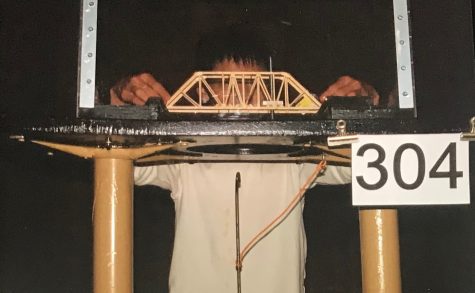
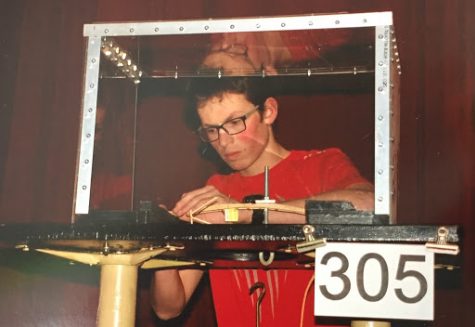
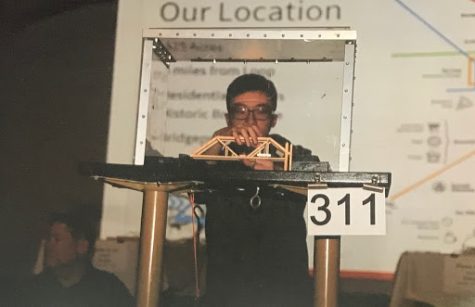
Power in numbers: Dewei Feng ‘20, Josh Koch ‘20, and Ethan Tam ‘22 focus intently on the competition’s tasks at hand.
Photos courtesy of Frank Hashimoto
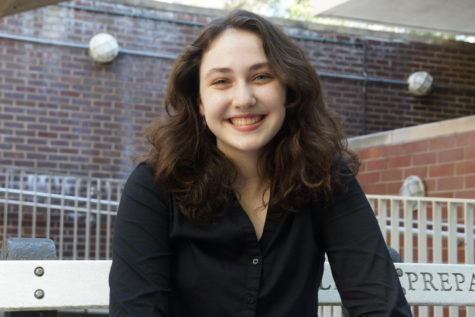
Fiona is a senior at Jones and this year's co-Editor-in-Chief of the Blueprint. Additionally, Fiona is involved with NHS, NEHS, Girl Up, and Young Democrats...

